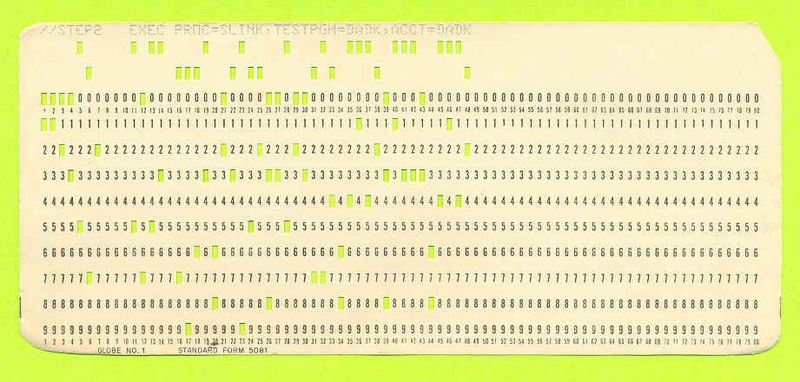Is aid stuck using IBM punch cards?
This post was written by Dennis Whittle. Dennis is the CEO of GlobalGiving, an international marketplace for philanthropy.

When I went to college in the late 1970s we used punch cards like the one pictured here to put information into the (mainframe) computer. Over the next thirty years, competition in computer technology led to rapid innovation. Over those same thirty years, the aid industry followed a decidedly different pattern of development.
In the early 1980s, the DOS operating system was a huge leap forward since it allowed people to use PCs on their own desktops. Ten years later, Microsoft released the Windows operating systems, which provided a graphical interface - another big advance.
All along, Apple had been selling its own graphical interface while struggling to avoid bankruptcy. But once Apple released its beautiful Mac OSX operating system, it rapidly gained market share, forcing Microsoft to develop (after several failures) a powerful new release of its Windows system. At the same time, Apple released the iPhone, a real game changer, especially when combined with Apple's App Store, which provided a distribution platform for hundreds of thousands of small, independent developers to release software applications. As a result of its competitive success, Apple's market value overtook Microsoft’s in May 2010. Some people think Apple’s new iPad could revolutionize the industry again.
The competition between Microsoft and Apple was based on what the customer wanted and liked. Both companies experimented with many products, some of which failed and some of which succeeded. They got rid (mostly) of the failed products and continually and incrementally enhanced the successful ones. Every once in a while (as with the graphical interface and the iPhone), they made giant leaps.
Contrast this with the aid industry, which, ironically, is managed in a centrally planned way even as it promotes market-based solutions to developing countries. The big aid agencies get very little feedback from their ultimate beneficiaries - the people they are trying to help. There has even been a recent trend around "partnerships and collaboration," whereby agencies agree to divide up their business and not compete. For example, the World Bank might agree to concentrate on telecoms in a set of countries, while the ADB handles health. This further insulates them from competition. The result has been little innovation over the past decades.
The operating system example is a good metaphor in itself. What operating system is the aid industry using right now? Unfortunately, over the past sixty years, it hasn’t progressed much beyond punch cards. While there have been improvements to the various processes, the aid business is still based largely on a "mainframe" model, with a small number of mainframes such as the World Bank, ADB, UN, and bilaterals such as USAID, MCC, DfiD, and AusAID dominating the market. What will it take to move toward a distributed "desktop" model of aid, and to stimulate the parallel creation of the DOS, Windows, Mac OSX, and even iPhone operating systems?
What would a competitive distributed operating system for aid look like? Put your ideas in the comments, and I’ll write a follow-up post.
 From Aid to Equality
From Aid to Equality


